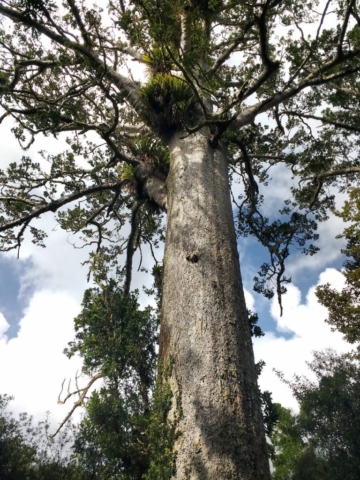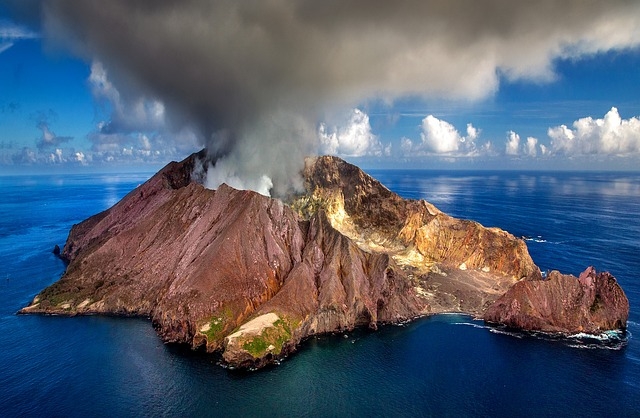The capital city: Wellington
The highest peak: Aoraki / Mount Cook (3,754 m)
The longest river: Waikato
The largest lake: Taupo
New Zealand, along with Australia, is part of an area known as Australasia. Together also the southwest end of the area called Polynesia. The term Oceania is used to denote an area comprising the Australian continent, New Zealand and the Pacific Islands not included in the model of the seven continents.
New Zealand (Aotearoa) is an island country located in the Southwest Pacific Ocean and consists of two main islands – North and South (+ several smaller ones). The islands are separated by the Cook Strait. Located approximately 1600 km southeast of Australia. It ranks fifth in the list of the largest island nations on Earth and with a population of 4.5 million is very sparsely populated in many areas.
New Zealand is nicknamed by the Australians as “Shaky Isles” (due to frequent seismic activity) because is located on the edge of two tectonic plates.
- The Southern
island is larger than the northern island and is divided by the Southern Alps in which there are a total of 18 peaks with a height higher than 3000 m.n.m. There are large beaches, glaciers, and fjords. - The North Island is mild and less mountainous but marked by several active and dormant volcanoes, sandy beach scenery across farmland to forests. The highly active volcanic zone of Taupo has created a large volcanic plateau with the largest lake in the country – Taupo.
The islands are divided into 16 regions
- Northland
- Auckland
- Waikato
- Bay of plenty
- Gisborne
- Hawke’s Bay
- Taranaki
- Manawatu-Wanganui
- Wellington
- Tasman
- Nelson
- Marlborough
- West Coast
- Canterbury
- Otago
- Southland
The closest neighbors in the north
- New Caledonia
- Tonga
- Fiji
The proximity of New Zealand north of Antarctica has made it’s South Island a gateway for scientific expeditions to the continent.
Climate
New Zealand is one of the most difficult countries in the world to forecast the weather. It’s not uncommon to experience four seasons in one day. The climate is predominantly mild, but varies from region to region, from extremely humid on the west coast of the South Island to almost semi-dry inland and subtropical in Northland.
Caves
New Zealand caves are divided according to their origin. Karst caves originated due to chemical weathering of limestone by water. But there are lava and sea caves too.
- The main areas of karst topography are Waitomo District, Takaka Hill in Tasman District, West Coast (Punakaiki), Hawkes Bay and Fiordland.
- Lava caves are located in Auckland (Rangitoto, Mount Eden, and Matukutururu).
- The layout of the sea caves is more sporadic, but you can find them at Karameo (Oparara Arches).
Rivers
To the east of the southern island are the rivers Wairau, Waimakariri, and Rangitātā, which were made of glaciers and flow into many springs on the gravel plains. Waikato, flowing through the North Island, is New Zealand’s longest river with a length of 425 kilometers. New Zealand rivers have hundreds of waterfalls, but the most visited are Huka Falls.
Fauna and Flora
Geographical isolation and island biogeography have influenced the development of the animal, fungal and plant species, 80% of which are endemic. Conifers dominate the forests, but the true treasure of New Zealand is the Kauri tree (one of the largest tree species in the world). There is a diverse range of birds, but unfortunately many are endangered and can only be seen in captivity. These include kiwi (national icon) and takahe. There are hardly any poisonous or dangerous animals. There are only 2 poisonous spiders whose bite is very rare.
Agriculture
Since 2007, almost 55% of the land has been used for agriculture, which is mainly pastoral, as only a small part of the land is arable (1.76%) and permanent crops cover 0.27% of the land. New Zealand is the world’s largest exporter of sheep. Other important resources are the dairy industry, beef, and lamb, fishing, kiwi, peach, nectarine, apple, avocado, cherry, wine, etc. Agriculture is the largest sector of the local economy.
Protected areas
Marking many places to preserve their environmental, historical or cultural value. The method and objectives of protection vary depending on the importance of the resource and whether it has public or private status. Almost 30 percent are publicly owned and have some protection. These areas include parks, continental islands, island reserves, marine reserves and national parks.
Natural danger
The most common are floods (during the winter). Only a small part of the regions will be able to avoid it during this period. Another is the earthquake, as New Zealand is at the interface of two tectonic plates. Since 2010, under Christchurch, there have been several major earthquakes, resulting in 185 deaths and extensive destruction of buildings. Volcanic activity is most common on the central volcanic plateau on the North Island.






